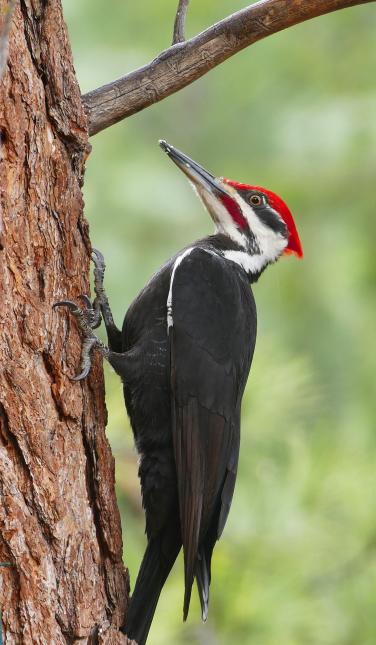Discovering Woodpeckers in Florida: Species Diversity and Nature
Discovering Woodpeckers in Florida: Species Diversity and Nature
Blog Article
Introducing the Secrets of Woodpeckers: Behavior, Environment, and Extra
Woodpeckers, with their one-of-a-kind actions and specialized adjustments, have actually long amazed scientists and nature enthusiasts alike. By uncovering the mysteries bordering woodpeckers' actions and environment options, a deeper understanding of these avian marvels arises, using a peek into their fascinating globe.
Woodpecker Habits Insights
In taking a look at woodpecker behavior, a remarkable display of specialized abilities and adaptations arises, shedding light on their exceptional ecological specific niche. Woodpeckers, known for their unique drumming on trees, have a range of behavior characteristics that add to their survival and success in their environment.
Moreover, woodpeckers exhibit a special feeding actions defined by their capacity to extract bugs from tree bark utilizing their specialized beaks. Their long, barbed tongues aid in recording prey, while their strong neck muscular tissues provide stability and accuracy throughout pecking motions. This feeding method permits woodpeckers to access concealed insect larvae and remove them with remarkable effectiveness.
Environment Preferences and Option
What factors influence the environment choices and option of woodpeckers? Woodpeckers are highly adaptable birds understood to live in numerous environments worldwide. Nevertheless, they do display choices for sure habitat qualities. One crucial element influencing woodpecker habitat choice is the accessibility of appropriate nesting websites. Woodpeckers normally favor woodlands with a mix of fully grown trees that give ample opportunities for cavity excavation. These cavities function as essential nesting and roosting sites for woodpeckers and are important for their breeding success.
Additionally, woodpeckers reveal a choice for habitats with an abundant supply of food sources. They are largely insectivorous, preying on beetles, ants, larvae, and various other insects found in worn out wood or tree bark. For that reason, woodpeckers tend to prefer woody areas with a varied insect populace to meet their nutritional requirements.
Moreover, the visibility of dead or rotting trees is another key consider woodpecker habitat selection. These trees not just offer food resources however also supply appropriate substratum for tooth cavity excavation. Dead trees are important for the upkeep of healthy woodpecker populaces, as they play an important duty in the woodpeckers' life cycle and ecosystem characteristics.
Feeding Habits and Diet Regimen Composition
Woodpeckers show a specialized feeding behavior focused on foraging for bugs within numerous habitats. In addition to bugs, woodpeckers additionally consume tree sap, fruits, nuts, and seeds, adding range to their diet plan depending on the period and availability of food sources.
The foraging techniques of woodpeckers are well-adapted to their arboreal way click here for info of living. Woodpeckers play a critical duty in preserving the health of woodlands by managing insect populations and aiding in the disintegration of wood.
Drumming Sounds and Interaction
Using rapid drumming audios on different surfaces, woodpeckers use an unique form of interaction to indicate territory boundaries and bring in companions. This drumming actions is not just a means of interaction but additionally serves as a way for woodpeckers to develop their presence within a certain area. The strength, speed, and pattern of the drumming can share essential details to other woodpeckers in the vicinity.
Woodpeckers utilize drumming sounds to reveal their presence in an area and to warn off prospective link intruders. The loud and repeated nature of the drumming works as a clear signal to other woodpeckers that the location is already declared. This helps in minimizing conflicts and lessening physical confrontations between people.

Survival Adaptations and Specialized Anatomy

Final Thought
To conclude, woodpeckers exhibit unique actions, such as drumming noises for communication, and have actually specialized composition for survival in their chosen environments. Their feeding routines and diet make-up additionally demonstrate their flexibility to different environments. By recognizing these elements of woodpeckers, researchers and preservationists can better protect and maintain these fascinating birds and their ecosystems.
Report this page